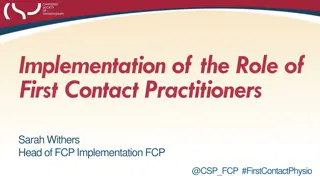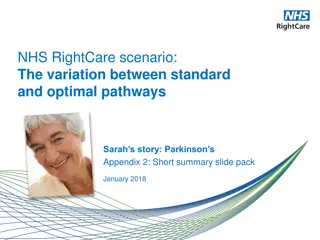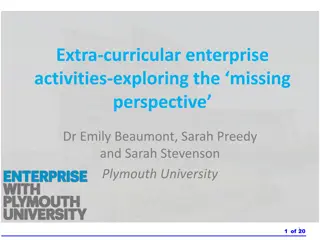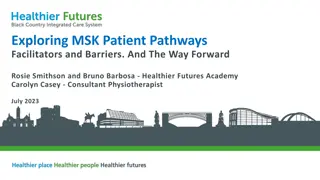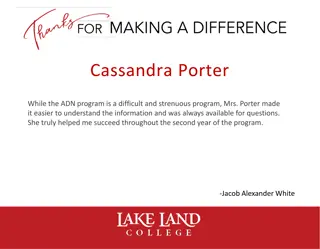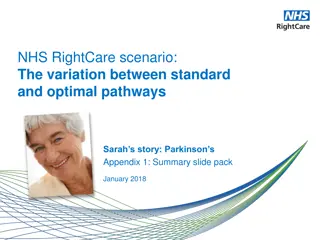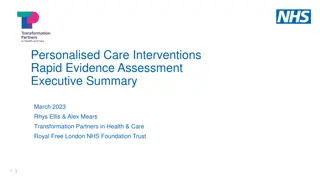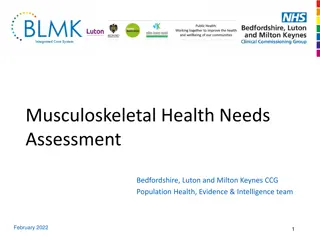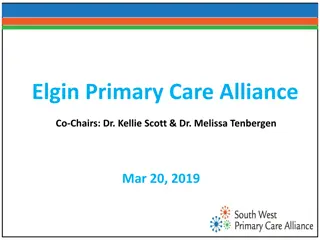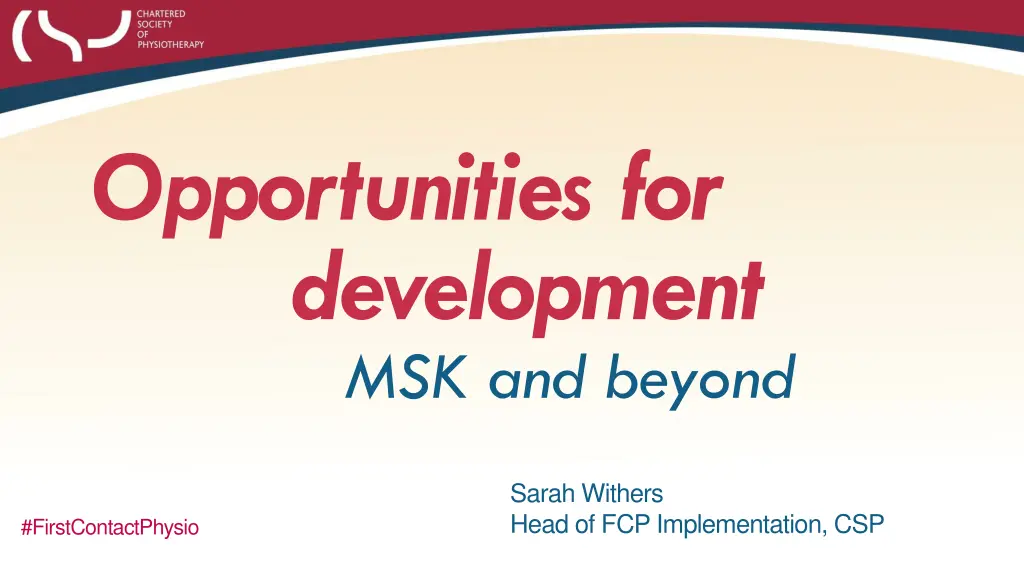
Development Opportunities in Primary Care Networks
Explore the various development opportunities in Primary Care Networks (PCNs) within the UK healthcare system, including the NHSE GP Contract, Long Term Plan, and creation of new healthcare roles. Learn about the impact on employment for First Contact Physios (FCPs) and the broader framework's implications for physio services. Discover how PCNs are set to shape the future of community health services as part of integrated care systems.
Download Presentation

Please find below an Image/Link to download the presentation.
The content on the website is provided AS IS for your information and personal use only. It may not be sold, licensed, or shared on other websites without obtaining consent from the author. If you encounter any issues during the download, it is possible that the publisher has removed the file from their server.
You are allowed to download the files provided on this website for personal or commercial use, subject to the condition that they are used lawfully. All files are the property of their respective owners.
The content on the website is provided AS IS for your information and personal use only. It may not be sold, licensed, or shared on other websites without obtaining consent from the author.
E N D
Presentation Transcript
Opportunities for development MSK and beyond Sarah Withers Head of FCP Implementation, CSP #FirstContactPhysio
What opportunities do the NHSE GP Contract and Long Term Plan offer?
Five year framework for GP contract reform The Framework announces the new Additional Roles Reimbursement Scheme, which will create 20,000+ new posts in general practices by 2024. These will include: first contact physios clinical pharmacists social prescribing link workers physician associates first contact community paramedics.
What are Primary Care Networks (PCNs) and why are they being developed? General practices across England will form into PCNs. These groups of practices will share decision-making responsibilities. Each PCN will cover a patient population of 30,000-50,000. They are intended to facilitate the development of more proactive and coordinated primary and community care services. This model builds on existing NHS initiatives, such as multi-specialty community provider vanguards and the Primary Care Home.
When will this happen? By 2024, an average PCN will have access to funding for 3 FCPs, 5 clinical pharmacists, 3 link workers, 2 physicians associates and 1 community paramedic. (However, the framework grants flexibility to PCNs to determine the staff mix of the Scheme-funded team.) From2020, each PCN will be allocated a single maximum reimbursement sum to freely employ any combination of these 5 roles The Framework states reimbursement will only be made available for demonstrably new roles (including staff replacements due to turnover in later years of the scheme).
How will this impact the employment of FCPs? NHSE anticipates that FCPs will be employed on terms equivalent to NHS Agenda for Change Bands 7-8a through the scheme. The Framework agreement leaves it to PCNs to decide how new roles are employed. Options include, for example, FCPs being directly employed by a lead practice or GP federation, or commissioned by way of a NHS community trust. The CSP, BMA and RCGP recommend the latter option (that FCPs are employed by existing providers of NHS services).
What opportunities does the Framework offer other physio services? PCNs are expected to play a key role in the transformation of community health services (as described in the Long Term Plan). NHS community providers are being asked to configure their community teams on PCNs footprints from July 2019. Integrated Care Systems required to cover all of England by 2021 will be expected to develop comprehensive anticipatory care services, such as proactive case finding for patients moderate frailty risk (commissioned by CCGs directly from PCNs). PCNs multi-disciplinary teams will likewise be expected to contribute to the redesign of urgent response and reablement services, with general practices core funding tied to this participation.
What does your community need (now and in the future)?
Principles of FCP brings expertise to the beginning of the pathway Improves access to patients for effective treatment Reduces GP workload/ duplication Improved use of medication/ diagnostics Reduces inappropriate onward referral or admission Where else can we apply these principles?
Example of a FCP led MDT Frailty clinic (pilot)
Bounce Back clinics: a multi-disciplinary service in primary care (led by Amanda Hensman-Crook and team) Referrals came from: GPs Patients discharged from hospital following a fall (identified by ICC Admin) Patients identified by Age UK community workers Community care navigators Community service providers Acute trust staff Primary care health care providers Self- referral Relatives or carers (with the patient s consent) Grange & Lakes Integrated Care Community (ICC) in Cumbria ran a pilot Bounce Back Falls Prevention Clinic in Primary Care funded by Gainshare The pilot ran over 12 months (November 2017 - October 2018) The clinics served 9 GP practices (via 3 hubs) The clinics were led by the First Contact Physio and involved Pharmacy, Nursing and Third Sector (Age UK) Remit: reduce risk of falls & hospital admissions in target population Target population: those with confidence loss pre-falls; those who have just started falling; regular fallers (within mild / moderate frailty category)
Bounce Back clinics: a multi-disciplinary service in primary care (led by Amanda Hensman-Crook and team) Outcome measures Clinic capacity Source of referral into clinic Electronic Frailty Index (Efi) Confbal scores Edmonton Scores Referral to community/core physiotherapy services Number of interventions from the case management team Number of individual interventions (case management team) Age UK referrals Number of hypo/hypertensive patients identified Number of Irregular heart- beats identified Body temperature increased Patient satisfaction During the pilot: 142 patients attended clinics with 57(40%) attending a review appointment at 12 weeks. (117 of the referrals came via GPs.)
Examples of other early intervention services in Primary Care
Services in Wales Services in Wales - - occupational therapy therapy occupational South Pembrokeshire and Merthyr & Cynon cluster : OT staff working with patients with Frailty providing early intervention to expertise which is reducing admission and GP contacts Ceredigion and Llanelli: OT staff focussing on patients with Mental Health conditions reducing secondary care admissions and GP demand Taf/Tywi cluster: OT & PT support worker who acts as conduit between the practices and community resource team. Addresses low level physical needs, i.e. equipment and minor adaptations, speedier access to appropriate care
OT in Wales OT in Wales Neath Port Talbot: Pathway development focussed on patients with fibromyalgia, ME, Chronic Fatigue Syndrome. Aims to reduce medication use, GP visits and improve functional outcomes. Introduced direct referral from primary care to OT which eliminates a secondary care Rheumatology referral in order to access OT.
Principles of FCP brings expertise to the beginning of the pathway Improves access to patients for effective treatment Reduces GP workload/ duplication Improved use of medication/ diagnostics Reduces inappropriate onward referral or admission Where else can we apply these principles?
Safety Skills Resources Effectiveness Patient & public expectations Practice teams Evaluation Effective- ness Safety Sustainability Funding Future workforce Sustainability
Challenges and opportunities Challenges and opportunities Implementation FCP models beyond MSK e.g. frailty, self-care advice for people with chronic obstructive pulmonary disease (COPD) and/or other long-term conditions Workforce Sustainable FCP workforce supply Professional development opportunities to sustain the FCP pipeline and build workforce capacity
If you were developing services in Primary Care in a similar First Contact/early intervention model what would be the greatest challenge ?





